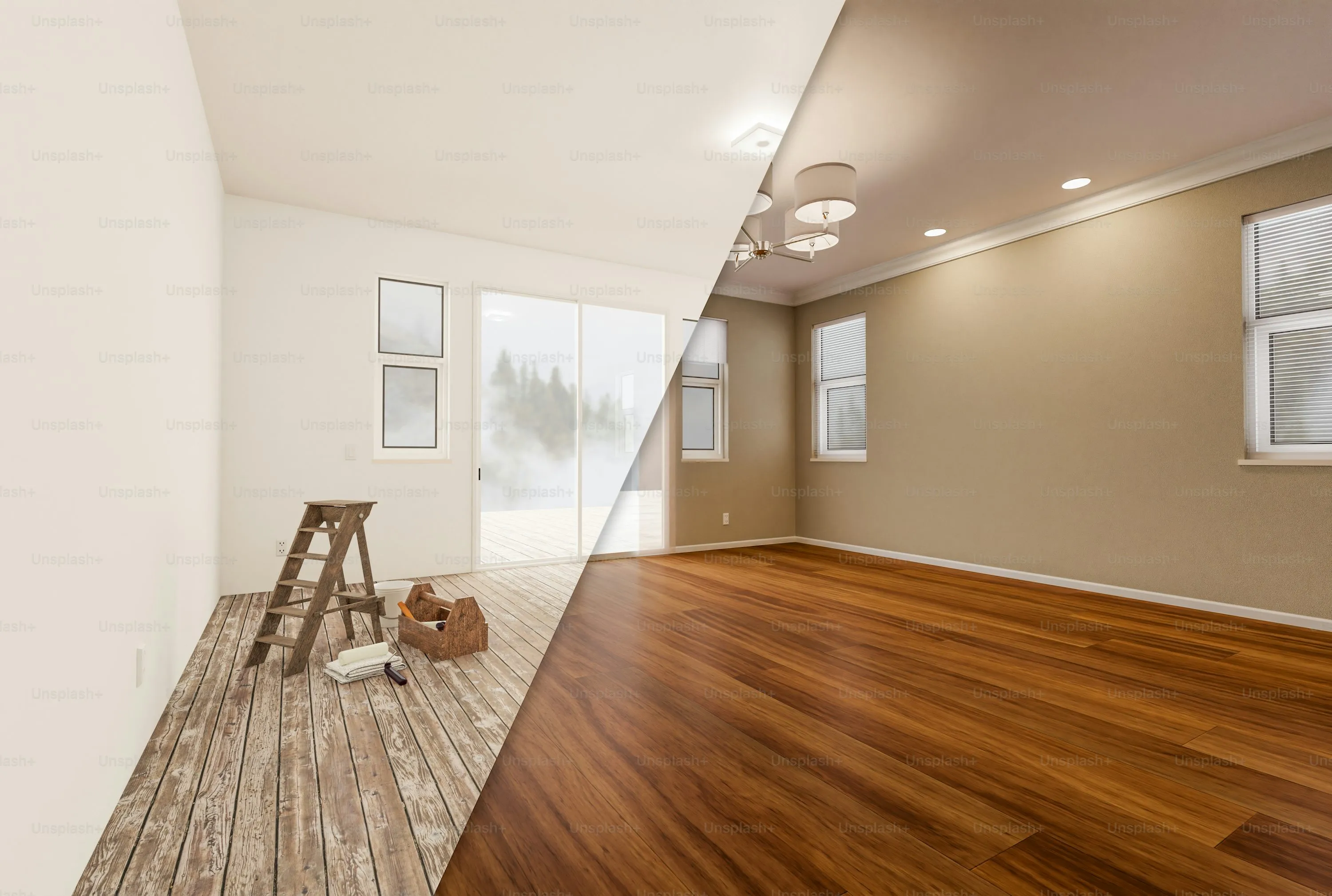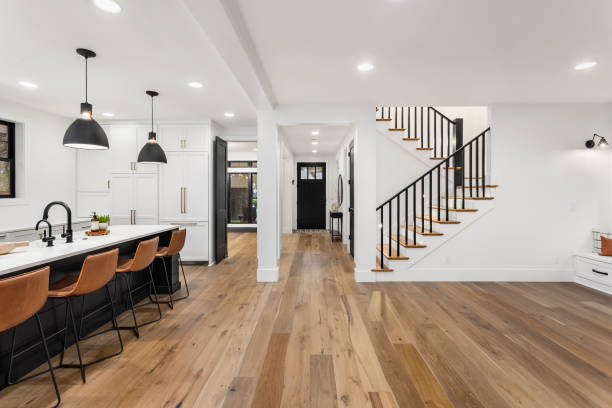
Hardwood Flooring Installation: A Step-by-Step Guide
Do you want to do Hardwood Flooring Installation but confused? Then this guide is for you. Hardwood floors are a classic appearance that provide warmth, beauty, and return on investment to any property.
If you’re renovating or building a new, hardwood flooring installation is a project that can make an incredible difference in the way your space looks. Hiring a professional guarantees perfection, but with the right tools and preparation you are perfectly able to install hardwood floors yourself.
In this step by step guide, we’re going to show you how to do spectacular hardwood flooring installation.
Read more:Top Hardwood Flooring Trends to Elevate Your Space
Steps for Hardwood Flooring Installation

Step 1: Gather Tools and Materials
Start by seeing if you have what you need before you get started. Commonly required items include:
- Hardwood planks
- It could be either underlayment or moisture barrier.
- Tape measure
- Pry bar
- Flooring nailer or stapler
- Circular saw or miter saw
- Chalk line
- Level
Before you start on your hardwood flooring installation, have all the things done to make it easier, faster and smoother.
Step 2: Prepare the Subfloor
Installing a hardwood floor requires a stable, level subfloor, because of which the success of this type of flooring hinges on it. Empty the room of old flooring, nails and staples.
Sand or fill them up with anything and inspect for uneven spots. In the case of concrete sub floors, make sure they have been cleaned, dried and moisture free. You can use a moisture barrier or underlayment that will protect your hardwood from making the same mistake in the future.
Step 3: Acclimate the Hardwood
Hardwoods expand and contract with temperature and humidity change. This will help prevent your planks from buckling once acclimated to your home environment. Put the hardwood flooring in the installation room for 48 – 72 hours before starting.
Step 4: Plan the Layout
Determine the way the planks are to travel. As a rule, flooring is aligned parallel to the longest wall or toward a room’s main light source. Chalk a starting line with a chalk line, and verify the first row is straight. Seamless hardwood flooring installation begins with a well planned layout.
Step 5: Install the First Row
Begin at the longest wall, which would be ¼ inch from the wall, or the planks. It allows the wood to be allowed to expand as time goes by. Nail or adhesive secure first row, making sure the planks are straight and not waddling. But this step has to be precise, because it becomes the foundation for the remainder of your hardwood flooring installation.
Step 6: Continue Laying Planks
To create a natural and handsome pattern in the stagger plank joints. Use a saw to trim pieces to necessary fit and tight fit. Drive each plank in at a 45 degree angle with a flooring nailer and use nails inside the tongue. This method hides the nails and gives polished finish.
The time during hardwood flooring installation is a great time to take your time. Check alignment and don’t force planks into place — doing so could damage the wood.
Step 7: Cut Around Obstacles
You may get blocked by door frames or vents or unusual walls. To fill these areas exactly, trim planks using a jigsaw or coping saw. It takes patience and precision at the same time if your hardwood floor installation is too want to keep up overall aesthetics.
Step 8: Finish with the Final Row
Often the final row needs to be trimmed to fit. Cut and measure planks to size, with the same ¼ inch expansion gap at the wall. Finally wedge these last pieces into place with a pry bar.
Step 9: Add Finishing Touches
Or, install baseboards or quarter round molding to cover expansion gaps at the walls. At this point you can begin to fill any nail holes with wood filler that matches your flooring color. Secondly, clean up the surface to remove any dirt or dust remaining behind from the hardwood flooring installed process.
Tips for Successful Hardwood Flooring Installation
- Check for moisture: Hardwood is an enemy of moisture. A moisture meter should be used to ensure that subfloor level tolerances are in keeping with your flooring type.
- Work slowly: Rushing can lead to mistakes. Double check every step, take your time.
- Keep the workspace clean: To prevent debris from causing problems with plank alignment during the hardwood flooring installation, you want to vacuum or sweep regularly.
Benefits of Hardwood Flooring installation
Hardwood floors don’t only add to the aesthetic value; they also boost the sale value of your house. Hardwood is hard wearing, easy to keep clean and comes in a variety of finishes to match your style. Installing the wooden flooring yourself can save both money and the feeling of completion.
Conclusion
Hardwood flooring installation is rewarding and rewarding project which can transform your home. It’s painstaking, patience, and precision, but the payoff is worth it. This step by step guide will lead you to those professional looking results that will last a lifetime.
To enable you to confidently do your hardwood flooring installation, whether you are a DIY person or a first timer, this guide will help you. Relish in your new floors, take your time, enjoy the process. Buy the best hardwood flooring from Panipat handloom emporium.







